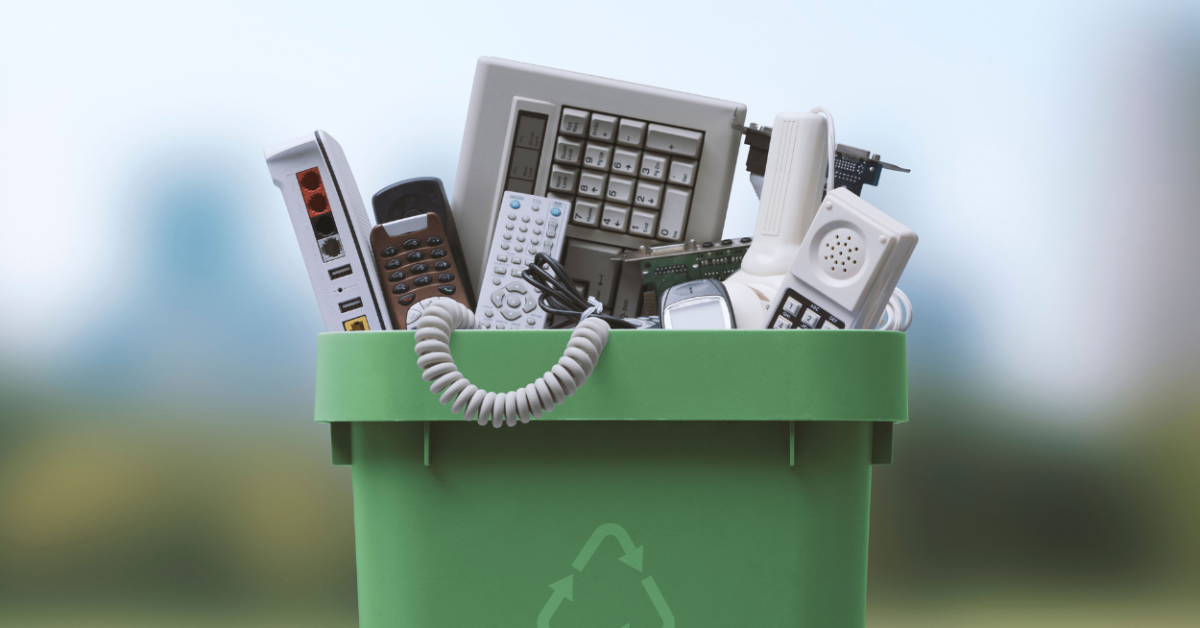
Artificial Intelligence: A Greater Threat than Climate Change
June 29, 2023
The Future of Work: The Rise of the Gig Economy
July 1, 2023The Environmental Impact of e-waste: How to Reduce Your Electronic Footprint
In our increasingly digital world, electronic devices have become an integral part of our daily lives. From smartphones to laptops and televisions to gaming consoles, we rely on technology for work, entertainment, and communication. However, with the constant upgrading and replacement of these devices, a new problem has emerged: electronic waste or e-waste. The improper disposal of e-waste has significant environmental impacts, including the release of toxic chemicals into the air, water, and soil. In this article, we will explore the environmental impact of e-waste and provide practical tips on how to reduce your electronic footprint.
Electronic devices, such as computers and smartphones, contain a plethora of hazardous materials that are detrimental to the environment and human health. For instance, lead, a common material found in electronic devices, can cause developmental delays, nerve damage, and brain damage when exposed to humans. Similarly, cadmium and mercury, both of which are found in electronic devices, can lead to severe respiratory issues and damage to the nervous system. When these devices are improperly disposed of, these hazardous materials can seep into the soil and groundwater, contaminating the surrounding ecosystem and posing a risk to wildlife and humans alike.
Furthermore, e-waste is a significant contributor to greenhouse gas emissions, which are responsible for climate change. The process of extracting and processing materials for electronic devices requires a considerable amount of energy, which contributes to carbon dioxide emissions. Additionally, when these devices are thrown away in landfills, they can release harmful gases such as methane, a potent greenhouse gas that is more harmful than carbon dioxide. By reducing our electronic footprint and properly disposing of electronic devices, we can help mitigate the environmental impact of e-waste and contribute to a healthier, more sustainable planet.
So, what can we do to reduce our electronic footprint and prevent e-waste? First, we should aim to extend the life of our electronics by repairing them when possible instead of immediately replacing them. This can be done by finding a reputable repair shop or using resources such as iFixit, an online platform that provides repair guides and tools for electronic devices.
Secondly, we can donate or sell our used electronics to organisations that refurbish and distribute them to people in need. This not only helps reduce e-waste but also promotes digital equity by providing access to technology for individuals who may not have the financial means to purchase new devices.
Thirdly, we can recycle our electronics properly. Many electronics retailers offer recycling programs, and some cities have electronic recycling facilities or events. It’s important to research and find reputable recyclers who follow proper disposal protocols to ensure that our e-waste does not end up in landfills or incinerators.
Lastly, we can reduce our overall consumption of electronics by being mindful of our purchasing habits. Before buying a new device, consider whether you really need it and whether it will have a significant impact on your life. Opting for refurbished or second-hand devices can also significantly reduce e-waste.
In conclusion, the environmental impact of e-waste is a growing concern, but we can all take steps to reduce our electronic footprint. By extending the life of our electronics, donating or recycling them properly, and being mindful of our purchasing habits, we can help reduce the harmful effects of e-waste on the environment and promote a more sustainable future.






